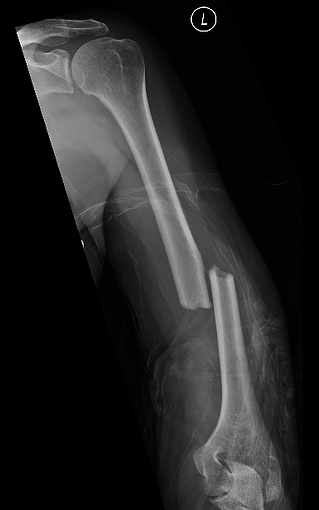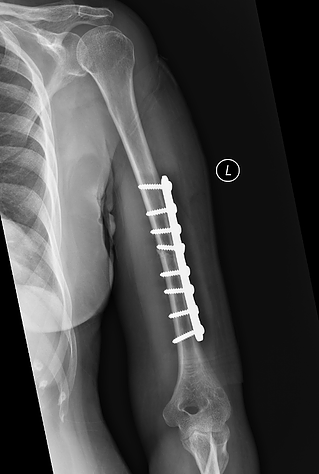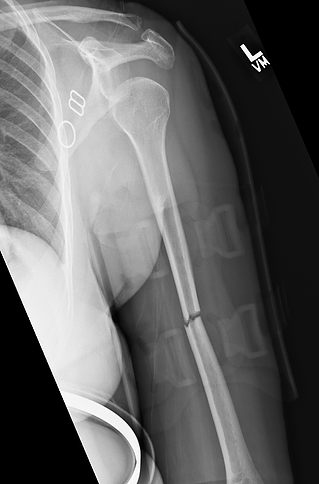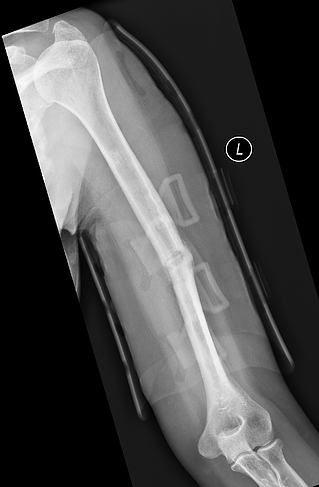Humeral Shaft Fractures
The management of humeral shaft fractures can vary depending on the fracture pattern, the immediate functional demands of the patient, and the willingness of the patient to accept some of the surgical risks of fracture fixation. While most humeral shaft fractures will heal with non-operative management, many patients elect to have surgery because if can hasten the recovery and allow earlier functional use of the arm, it can result in improved healing rates, and it can result in better alignment of the fracture. There are, however, some risks to surgery, the most significant of which is risk to the radial nerve. This nerve directly in the surgical field and is prone to stretch injury during surgery. In some cases the nerve may have been injured from the original break as well. This results in some functional loss in the wrist and hand which can take months to recover, and in severe cases, the functional loss can be permanent. Fortunately, nerve injury is uncommon, but it can still occur in up to 5% of surgical cases.
Below are two recent cases of humeral shaft fracture that we managed in different ways. The first case was managed with surgery because the fracture was a 100% displaced and shortened. The patient desired to quickest functional recovery so we elected to fix the fracture.


The second case was less displaced and aligned nicely in a functional brace. The fracture eventually healed after about 8 weeks in the brace. There was some residual mal-alignment of the fracture, but typically this should not have any significant effect on patient's function in the long term.









